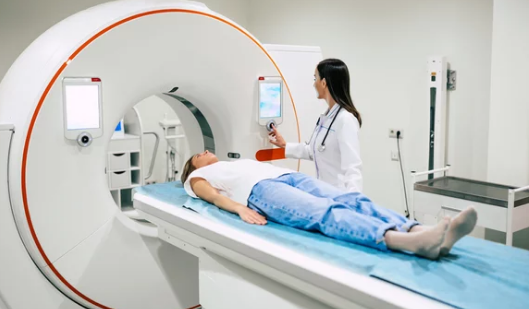Magnetic Resonance Imaging (MRI) has revolutionized modern medicine by providing high-resolution, non-invasive imaging of the human body. Yet, capturing the scan is only half the story. The true diagnostic power of MRI lies in how the images are processed, visualized, and interpreted. This is where MRI visualization platforms come into play—transforming raw DICOM data into clinically meaningful insights.
With dozens of options available, each boasting unique features, AI enhancements, and workflow integrations, how do you determine which MRI visualization software truly stands out? In this article, we break down the most popular platforms, compare their capabilities, and help you identify the right solution for your medical or research needs.
Why Choosing the Right MRI Visualization Platform Matters
Selecting the right visualization tool can influence:
- Diagnostic accuracy – Enhanced image clarity and advanced analytics improve detection of abnormalities.
- Workflow efficiency – Faster processing and intuitive interfaces reduce reporting times.
- Collaboration – Secure sharing and real-time annotation enable multidisciplinary teamwork.
- Patient engagement – Clear visual reports help patients better understand their conditions.
The wrong choice can lead to inefficiencies, missed findings, and compatibility issues with existing hospital systems.
Key Criteria for Evaluation
When comparing MRI visualization platforms, medical professionals should focus on:
- Image Processing Power – Speed and quality of 3D/4D reconstruction.
- AI Integration – Automated segmentation, detection, and quantification tools.
- Cross-Platform Compatibility – Desktop, web, and mobile availability.
- Collaboration Tools – Secure sharing, annotations, and live conferencing.
- Regulatory Approval – FDA clearance, CE marking, or other certifications.
- Cost vs. Value – Balancing advanced features with budget considerations.
Head-to-Head Comparison of Leading MRI Visualization Platforms
| Platform | Best For | Key Features | Pros | Cons | Price Range |
|---|---|---|---|---|---|
| OsiriX MD | Radiologists & researchers (Mac users) | FDA-cleared, CE-certified, 3D/4D imaging, plugin support | Intuitive, high-speed rendering | Mac-only, license renewal required | $$$ |
| RadiAnt DICOM Viewer | Quick viewing on Windows | Portable version, MPR, MIP, 3D volume rendering | Lightweight, fast loading | Limited AI features | $ |
| 3D Slicer | Research & education (cross-platform) | Open-source, custom modules, segmentation tools | Free, highly customizable | Steep learning curve | Free |
| syngo.via | Hospitals using Siemens MRI scanners | AI-powered analysis, cloud collaboration | Seamless Siemens integration | Proprietary, high cost | $$$$ |
| GE AW Server | Multi-specialty diagnostic centers | Cardiac/neuro modules, perfusion imaging, web access | Reliable, strong vendor support | GE infrastructure required | $$$$ |
| Philips IntelliSpace | Enterprise hospitals & research | Multi-modality imaging, AI-driven workflows | Excellent integration & collaboration tools | Complex deployment, premium pricing | $$$$ |
| Intrasense Myrian | Oncology & chronic disease tracking | Lesion tracking, multi-platform support | Strong for longitudinal studies | Less common in North America | $$–$$$ |
Detailed Platform Insights
1. OsiriX MD
Perfect for radiologists and researchers, OsiriX MD offers top-tier 3D/4D image manipulation with an intuitive interface. It’s highly regarded for speed and customization, but its Mac-only limitation can be a dealbreaker for cross-platform teams.
2. RadiAnt DICOM Viewer
For quick and lightweight access on Windows, RadiAnt is unmatched in speed. It’s portable, easy to use, and requires minimal setup—ideal for on-the-go consultations. However, it lacks the AI-powered automation now common in premium solutions.
3. 3D Slicer
This open-source powerhouse is a favorite among researchers and educators thanks to its modularity and zero cost. While the learning curve is steep, its flexibility makes it invaluable for academic and experimental imaging work.
4. syngo.via
From Siemens Healthineers, syngo.via excels in integration with Siemens MRI scanners. It leverages AI for lesion detection and includes cloud-based collaboration tools—perfect for hospitals already within the Siemens ecosystem.
5. GE AW Server
Designed for multi-specialty diagnostic centers, GE AW Server offers advanced cardiac and neurological imaging capabilities. Its web-based access is excellent for remote diagnostics, but it works best within GE infrastructure.
6. Philips IntelliSpace Portal
A premium enterprise-grade platform, IntelliSpace supports multiple imaging modalities and AI-enhanced workflows. It shines in large hospital settings but requires significant investment and IT resources for deployment.
7. Intrasense Myrian
Specialized in oncology and chronic disease tracking, Myrian stands out for its longitudinal analysis features. It’s gaining popularity in Europe and Asia, though it’s still less known in North America.
Which One Wins?
The answer depends on your specific environment and priorities:
- For speed and simplicity: RadiAnt
- For cost-effective research: 3D Slicer
- For Siemens-based hospitals: syngo.via
- For high-end enterprise integration: Philips IntelliSpace
- For oncology monitoring: Intrasense Myrian
- For advanced Mac-based workflows: OsiriX MD
In truth, there’s no one-size-fits-all winner. The best MRI visualization platform is the one that aligns with your institution’s hardware ecosystem, imaging needs, and budget.
The Future of MRI Visualization
Expect to see:
- AI-first platforms that handle segmentation and reporting automatically.
- AR/VR integration for surgical planning and education.
- Cloud-native solutions enabling instant global collaboration.
- Predictive analytics for early disease progression alerts.
MRI visualization is rapidly evolving from a static image viewer into a dynamic, AI-powered decision-support system—and the right choice today can set the stage for even greater capabilities tomorrow.
Also Read :
